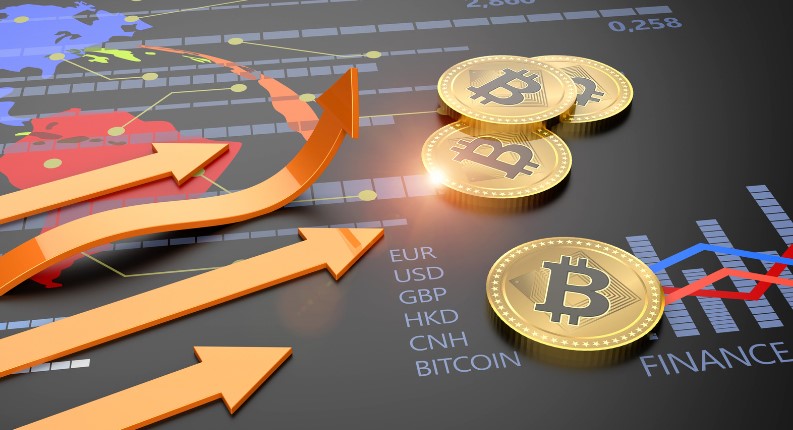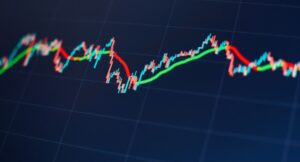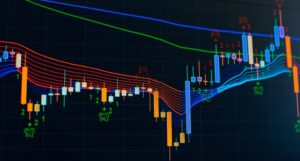
EMA (Exponential Moving Average) Strategies for Crypto Trading
In the fast-paced world of cryptocurrency trading, technical analysis plays a crucial role in making informed decisions. One of the most commonly used tools in technical analysis is the Exponential Moving Average (EMA).
Unlike a simple moving average, the EMA gives more weight to recent price data, allowing traders to capture the most current market trends.
EMA strategies have become popular in crypto trading, as they can help traders identify entry and exit points in volatile markets like Bitcoin, Ethereum, and other cryptocurrencies.
This article will explore EMA strategies, how they work, and why they are effective in the crypto market. By the end, you will have a solid understanding of how to integrate EMA strategies into your crypto trading arsenal.
What is EMA?

The Exponential Moving Average (EMA) is a type of moving average that gives more significance to the most recent prices. Unlike the Simple Moving Average (SMA), which weighs all data points equally, EMA reacts more quickly to price changes, making it ideal for short-term traders.
The formula for calculating EMA involves using a smoothing factor, which ensures that recent data influences the EMA more than older data. This makes EMA particularly useful in detecting market trends in real-time.
How EMA Works in Crypto Markets?
In cryptocurrency trading, the market can shift quickly, and traders need indicators that respond promptly to these changes. EMAs help to:
- Identify Trends: EMA shows the general direction of the market. When the price is above the EMA, it indicates an upward trend, and when the price is below, it signals a downward trend.
- Generate Signals: EMAs can generate buy and sell signals based on crossovers between different timeframes.
- Smooth Price Data: EMA reduces noise from volatile price swings, making it easier to spot consistent trends.
Key EMA Strategies for Crypto Trading
EMA Crossover Strategy

One of the most popular strategies in crypto trading is the EMA crossover. This involves using two EMAs of different timeframes, commonly the 50-day EMA and the 200-day EMA.
- Bullish Crossover: When the shorter EMA (e.g., 50-day) crosses above the longer EMA (e.g., 200-day), it signals a potential upward trend, often referred to as a “golden cross.” Traders typically buy when this occurs.
- Bearish Crossover: When the shorter EMA crosses below the longer EMA, it signals a downward trend, known as a “death cross,” indicating a potential sell signal.
EMA with Support and Resistance Levels
Another effective strategy involves combining EMA with support and resistance levels. By using the EMA as a dynamic support or resistance line, traders can identify potential entry and exit points:
- In an Uptrend: The EMA acts as a support level. Traders can place buy orders when the price touches the EMA but does not break below it.
- In a Downtrend: The EMA acts as a resistance level. Traders may place sell orders when the price touches the EMA and starts declining.
EMA Scalping Strategy
Scalping is a short-term strategy that involves making quick trades to take advantage of small price movements. EMA is useful in this strategy, especially with shorter timeframes such as the 5-minute and 15-minute EMAs. Traders using EMA scalping strategies often aim for minimal profits from multiple trades throughout the day.
In this strategy:
- Buy: When the price moves above the short-term EMA.
- Sell: When the price drops below the short-term EMA.
Pros and Cons of EMA in Crypto Trading
Pros
- Responsive to Price Changes: EMA adjusts quickly to price movements, making it ideal for capturing trends in fast-moving crypto markets.
- Simple to Use: Traders find it easy to interpret EMA signals, especially when using crossovers and combining them with other indicators.
- Adaptable for Different Timeframes: EMA can be used in both long-term and short-term trading strategies, making it versatile.
Cons
- False Signals in Choppy Markets: In markets with no clear trend, EMA can generate false signals, leading to potential losses.
- Lagging Indicator: Despite its responsiveness, EMA is still a lagging indicator. It relies on past price data, which means it may not predict price changes in real-time.
Integrating EMA with Other Indicators

To improve the reliability of EMA signals, traders often combine it with other technical indicators such as:
- Relative Strength Index (RSI): Helps identify overbought or oversold conditions, reducing the risk of false signals.
- MACD (Moving Average Convergence Divergence): Works well with EMA crossovers to confirm trend reversals.
By combining EMA with other indicators, traders can refine their strategies and make more informed decisions.
Conclusion
EMA is a powerful tool for traders navigating the highly volatile cryptocurrency markets. Its ability to respond quickly to price movements makes it particularly useful for both day traders and long-term investors.
By implementing strategies such as the EMA crossover, combining it with support and resistance levels, and using it in scalping strategies, traders can significantly enhance their ability to predict market trends and make profitable trades.
With the right understanding and application, EMA can be a valuable addition to your trading toolkit. Want to learn more about the latest trends and strategies in trading? Visit Quantum ai for advanced insights and tools that can enhance your trading experience.
FAQ (Frequently Asked Questions)
What is an Exponential Moving Average (EMA)?
An Exponential Moving Average (EMA) is a type of moving average that gives more weight to recent prices, allowing it to react more quickly to price changes.
How does EMA help in crypto trading?
EMA helps traders identify trends, generate buy and sell signals, and smooth price data to reduce noise from market volatility.
What is the best EMA crossover for crypto trading?
The most commonly used EMA crossover involves the 50-day EMA and the 200-day EMA, where a bullish crossover signals a buy and a bearish crossover signals a sell.
Can I use EMA for short-term trading?
Yes, EMA is highly effective for short-term trading strategies like scalping, especially when using shorter timeframes like the 5-minute or 15-minute EMA.
What are the risks of using EMA in trading?
EMA can generate false signals in choppy markets or during periods of consolidation. It is also a lagging indicator, meaning it relies on past price data.
How can I avoid false signals with EMA?
To reduce false signals, traders often combine EMA with other indicators like the Relative Strength Index (RSI) or MACD.
What timeframe is best for EMA in crypto trading?
The best timeframe depends on your trading strategy. For long-term trends, the 50-day and 200-day EMA are popular, while shorter timeframes like the 5-minute EMA are better for day trading or scalping.
How do I interpret EMA in a downtrend?
In a downtrend, the price will typically stay below the EMA, and the EMA can act as a resistance level. Traders can look for short-selling opportunities when the price fails to break above the EMA.
What is the difference between EMA and SMA?
While both are types of moving averages, EMA gives more weight to recent prices, making it more responsive to current price movements, whereas SMA gives equal weight to all data points in the selected timeframe.
Can I use EMA for long-term investing?
Yes, EMA can be used for long-term investing, especially when analyzing long-term trends with larger timeframes like the 100-day or 200-day EMA.
Author Profile

- Blogger by Passion | Contributor to many Business and Marketing Blogs in the United Kingdom | Fascinated with SEO and digital marketing and latest tech innovations |
Latest entries
 Digital MarketingApril 11, 2025Digital Marketing Tactics That Generated £1M in Revenue for UK Retailers
Digital MarketingApril 11, 2025Digital Marketing Tactics That Generated £1M in Revenue for UK Retailers Web DesignApril 11, 2025UK Digital Trends: Top Website Building Solutions for 2025
Web DesignApril 11, 2025UK Digital Trends: Top Website Building Solutions for 2025 TechnologyMarch 31, 2025The Future of Text-to-Speech: Transforming Communication in Healthcare
TechnologyMarch 31, 2025The Future of Text-to-Speech: Transforming Communication in Healthcare TechnologyMarch 28, 2025Top-Rated Tools Every Modern Recruiter Needs in Their Toolkit
TechnologyMarch 28, 2025Top-Rated Tools Every Modern Recruiter Needs in Their Toolkit

